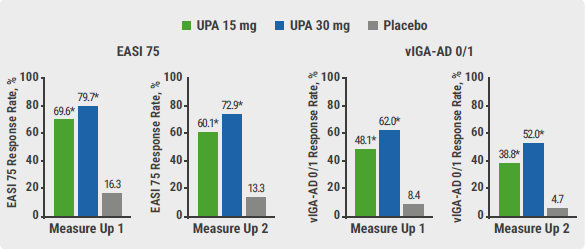Launched in April 2020, the COVID-19 Dermatology Registry was developed and supported by the American Academy of Dermatology and the International League of Dermatological Societies to track skin manifestations of COVID-19 [1,2]. It is important to consider what the registry with a global reach can and cannot do. Prof. Esther Freeman (Director of the COVID-19 Dermatology Registry; Harvard Medical School, USA) explained, “The registry allows us to bring together the different skin manifestations that as single observations may not mean that much, but when you bring them together, they start to tell a story and will allow us to form hypotheses about how COVID-19 is presenting in the skin.” She also suggested that the registry should be seen as a giant series of case studies rather than a population-based cohort study that could tell anything about, for example, incident rates of dermatologic COVID-19 manifestations or causations.
The presented analysis was done in August 2020 when the registry already comprised 900 cases from 39 countries, of which 330 were lab-confirmed by PCR or antibody testing [1]. The providers were contacted for follow-up data and this led to 224 cases with dermatologic symptom duration data. The aim of this analysis was to shed light on the existence and duration of long-term COVID-19 symptoms of the skin. “This is particularly relevant because cutaneous manifestations are visible to the naked eye, so they are for all to see and cutaneous manifestations could be a sign of underlying pathophysiology or underlying larger-scale inflammation of the body,” said Prof. Freeman.
In terms of duration, the dermatologic symptoms lasted a median time of 12 days, but differences were observed according to the type of morphology. For example, urticaria, as may be expected, had a median duration of 5 days and papulosquamous disorders lasted a median of 20 days. Furthermore, Prof. Freeman stressed that it was also interesting to look at the outliers and 5 of those outliers with pernio qualified as “long haulers” because their symptoms lasted ≥60 days. Prof. Freeman remarked that she suspects patients with long-term COVID-19 are underrepresented in the registry. She presented an example of a patient with a dramatic clinical course of COVID toes, starting with a subtle erythema a week after the onset of cough and fatigue that worsened over time to a state with some toes being persistently violaceous and symptomatic even after over 133 days. Interestingly, the IgA levels of this patient were more in line with those seen in more severe cases with systemic symptoms than with those with short-term pernio.
“We encourage dermatologists caring for patients with long-hauler symtoms or long-term COVID-19 to enter their data in the registry so that we can better capture this population,” said Prof Freeman and asked them to submit their data under www.aad.org/covidregistry, as there is still much to study about COVID-19.
- Freeman E. COVID-19 "long-haulers" in Dermatology? Duration of dermatologic symptoms in an international registry from 39 countries. D1T03.3D, EADV 2020 Virtual Congress, 29-31 Oct.
- Freeman E, et al. J Am Acad Dermatol. 2020;83:1118-1129.
Posted on
Previous Article
« Selective IL-23 blocker shows potential in psoriasis treatment Next Article
Biologic psoriasis treatment and COVID-19 risk: Contradictory results »
« Selective IL-23 blocker shows potential in psoriasis treatment Next Article
Biologic psoriasis treatment and COVID-19 risk: Contradictory results »
Table of Contents: EADV 2020
Featured articles
Late-Breaking News
Selective IL-23 blocker shows potential in psoriasis treatment
Promising results with nanobody treatment in psoriasis
Light at the end of the tunnel for chronic hand eczema
Epidermolysis bullosa: Novel wound treatment on the horizon
Efficacious non-steroidal topical for psoriasis
Oral JAK 1 inhibitor leads to fast itch relieve and remarkable skin clearance in AD
COVID-19: What Dermatologists Need to Know
Biologic psoriasis treatment and COVID-19 risk: Contradictory results
Much to be learned about COVID-19 and the skin
JAK Inhibitors – A Fascinating Novel Drug Class
JAK inhibitors in AA: re-establishing the immune privilege of hair follicles
JAK1 inhibition successful in hidradenitis suppurativa
Topical JAK inhibition: a novel treatment option for patients with mild-to-moderate AD
Urticaria – What’s new
Chronic inducible urticaria can require some detective work
Chronic spontaneous urticaria: hives, wheals & biomarkers
Ligelizumab for chronic spontaneous urticaria: a new star on the horizon
Infectious Diseases: Novel Developments
Bacterial resistance in skin infections – a challenging threat
Borreliosis: A multifaceted disease
Scabies – A global health challenge
Upcoming Treatments
Meaningful sleep improvement with IL-13 inhibition
Preventing foot odour with zinc oxide coated socks
Baricitinib in AD: Efficacy paired with consistent long-term results
Best of the Posters
Real-world data on brodalumab affirms efficacy and fast onset of action
Heightened risk for psychiatric comorbidities in hidradenitis suppurativa patients
Effects IL-13 blocker improves with longer treatment duration
Related Articles
December 17, 2020
Baricitinib in AD: Efficacy paired with consistent long-term results
December 17, 2020
Chronic spontaneous urticaria: hives, wheals & biomarkers

© 2024 Medicom Medical Publishers. All rights reserved. Terms and Conditions | Privacy Policy
HEAD OFFICE
Laarderhoogtweg 25
1101 EB Amsterdam
The Netherlands
T: +31 85 4012 560
E: publishers@medicom-publishers.com

